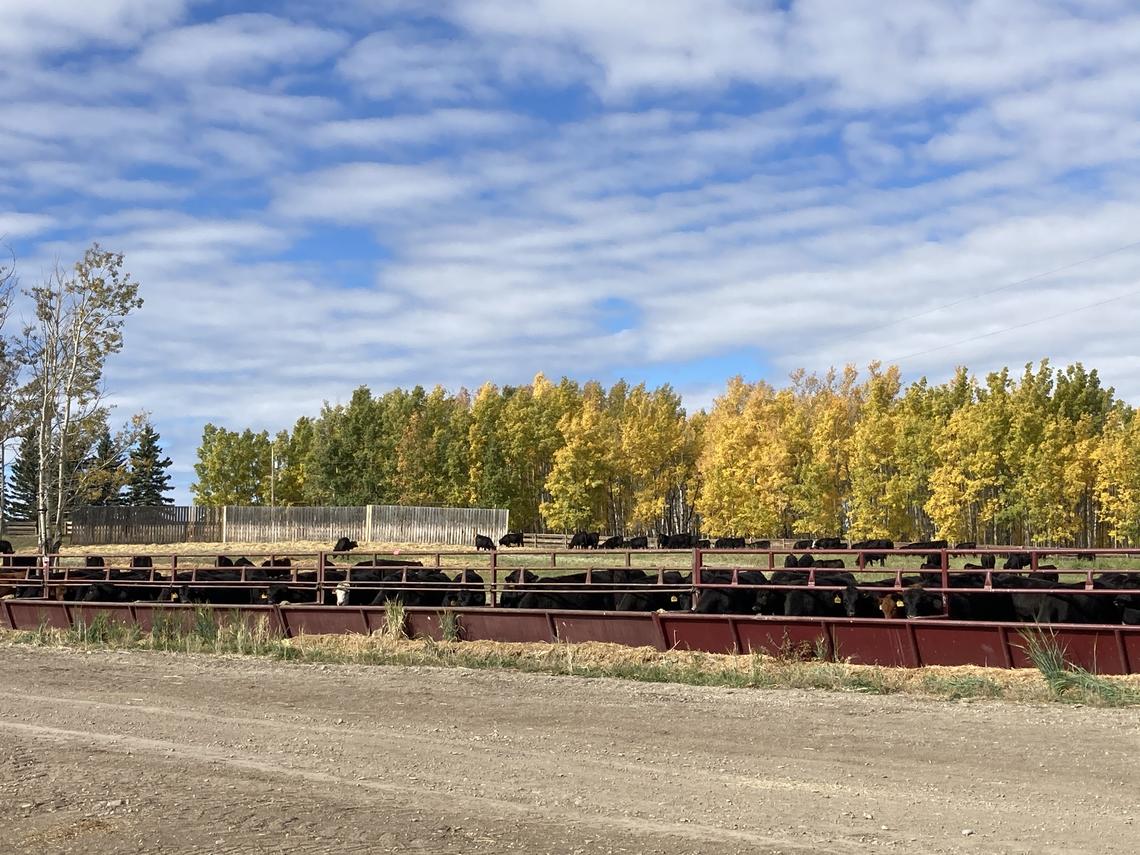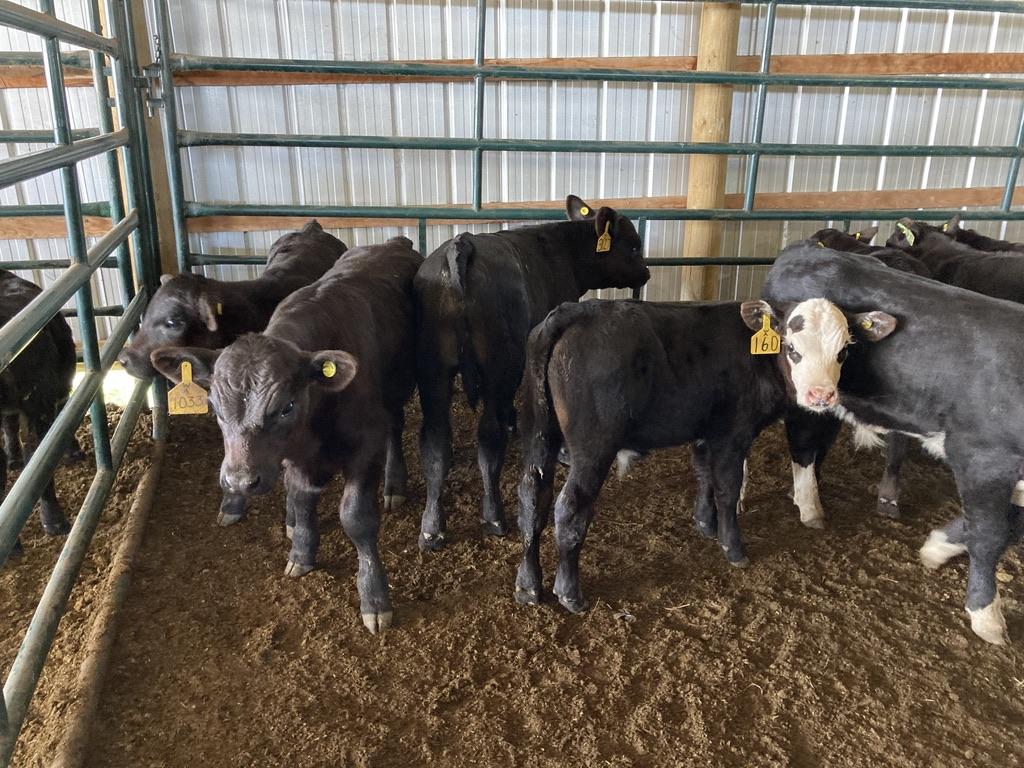Feb. 23, 2021
UCalgary-led research looks to improve health, welfare, and resilience of beef calves

It’s a common and costly problem for beef producers: Calves sent to feedlots developing potentially fatal bovine respiratory disease (BRD), which can result in animals suffering and significant economic losses.
For calves who’ve only known life grazing the grasslands with their mothers, the move to a feedlot is stressful. Separated from mom, they’re loaded onto a truck and taken to an unfamiliar place with unfamiliar feed and grouped with unfamiliar calves.
These stresses can reduce the ability of a calf’s immune system to fight off illness, says Dr. Karin Orsel, DVM, PhD, a professor and cattle disease expert in UCalgary’s Faculty of Veterinary Medicine (UCVM).
Orsel and a consortium of researchers are doing a deep dive into a cattle management system called pre-conditioning. They’re investigating whether low-stress handling on the ranch, combined with gradual weaning and a schedule of vaccinations "pre-conditions" them to better adapt to feedlot life.
Fewer sick calves would mean a reduction in the use of antibiotics. That would provide not only a solution to the cattle industry, but also a weapon against antimicrobial resistance — a global threat to human and animal health, where bacteria evolve and no longer respond to drugs that treat infection.
Study enlists the help of calves at W.A. Ranches
The researchers raised 250 calves at W.A. Ranches for the project. They bought another 250 at auction to compare how calves raised in different ways fare at the feedlot.
“It’s a big antimicrobial resistance project and really multidisciplinary,” says Orsel, who is collaborating with two UCVM researchers, Dr. Ed Pajor, PhD, an animal welfare and behaviour expert, and Dr. Frank van der Meer, DVM, PhD, who specializes in bovine virology.
“Frank is looking at the calves’ respiratory microbiome — the population of bacteria in their noses — and Ed is studying welfare of calves,” explains Orsel. “With my students, I’m looking at epidemiology — the rate of illness and death at the feedlot.” They’re also studying the implications of pre-conditioning on a variety of other issues.

Master’s student Abby Hodder with a variety of study sampling materials at W.A. Ranches.
Karin Orsel
The project draws on the expertise of cattle economists Kathy Larson at the University of Saskatchewan and Dr. Henry An, PhD, at the University of Alberta, as well as Dr. Trevor Alexander, PhD, a microbiologist at Agriculture and AgriFood Canada in Lethbridge, and Sean Thompson, a livestock feed and nutrition researcher at Olds College.
Like a daycare full of germs
“Commonly in feedlots, calves are bought at auction and you have no idea if they're vaccinated. You have no idea when they were separated from their moms. You have no idea how long they've been on a truck or when they last had water or food. By the time they arrive at the feedlot, they're stressed, and their immune system is compromised.”
At the feedlot, calves from multiple sources are grouped together in pens. “This increases the risk of BRD rapidly spreading,” Orsel says.
“I always tell people, ‘Think about a daycare. If you put kids together and they have snotty noses, they all get sick.’ That's the same thing with calves. If you put them together with snotty noses, in no time they all get sick."
How to pre-condition a calf
“What we try to do is give the cattle at W.A. a perfect life,” says Orsel. “We used a fence-line weaning method. This means that when we separated them, their moms were on one side of a fence, the calves on the other. The calves could still see and touch their mom through the fence, but they could not drink from the udder. We gave them second shots of vaccines and a week later moved them to a different location. That's where we taught them how to eat from a bunk and drink water from a trough. Because normally, your average calf would be on pasture with mom until the day it’s put on the truck and moved to a feedlot. That is super stressful and causes a lot of health challenges.”

After weaning, the calves are moved to their new pasture pen to learn to eat from a bunk.
Karin Orsel
Comparing calves raised with different methods
Orsel compared several groups of calves at the feedlot. One pen had only pre-conditioned calves from W.A. Ranches, one pen housed auction calves, and three other pens were a mix of the two in different ratios.
“The big difference with the W.A. calves is they’ve been gradually separated from their moms,” says Orsel. “Along with being raised with low-stress handling, we think the vaccination protocol used will result in their immune systems responding better to the challenges they may experience when being moved to the feedlot.”

After a low-stress separation process, calves are put in a pen before receiving their vaccinations.
Karin Orsel
“Whereas with the auction calves, if you haven't been eating, if you are nervous because you have just lost sight of your mom, if you really don't know what's happening in life, a vaccine given when they arrive at the feedlot will just not work due to the multiple stressors the animal is experiencing.” The result is more sick calves needing antibiotics.
Once completed, the project findings will add to the body of evidence around the costs and benefits of pre-conditioning in animal welfare, disease prevention, and reduced antimicrobial use.
“We want to see if W.A. calves will still be happy and healthy if they're mixed in with auction calves. Or at a certain point, will there be so many sick auction calves around them that they also become sick? Ultimately, we're going to evaluate whether all the extra time and energy that W.A. Ranches puts into raising calves will pay off.”
In the Media
This project is funded as part of the Major Innovation Fund focused on antimicrobial resistance and through the Alberta Agriculture and Forestry grant supported by Alberta Beef Producers.
The research team consists of Karin Orsel (PI), Ed Pajor, Frank van der Meer, Sean Thompson, Kathy Larson, Henry An, and Trevor Alexander. It provides training opportunities for graduate students Abby Hodder, Morgan Louden, and Michael Sydora.
If you’d like to learn more about the groundbreaking technology, policy reform, and research that is innovating the agri-food and agri-tech sector, please join us for a compelling discussion at UCalgary’s Idea Exchange on Feb. 24 from 4:30 to 6 p.m.





